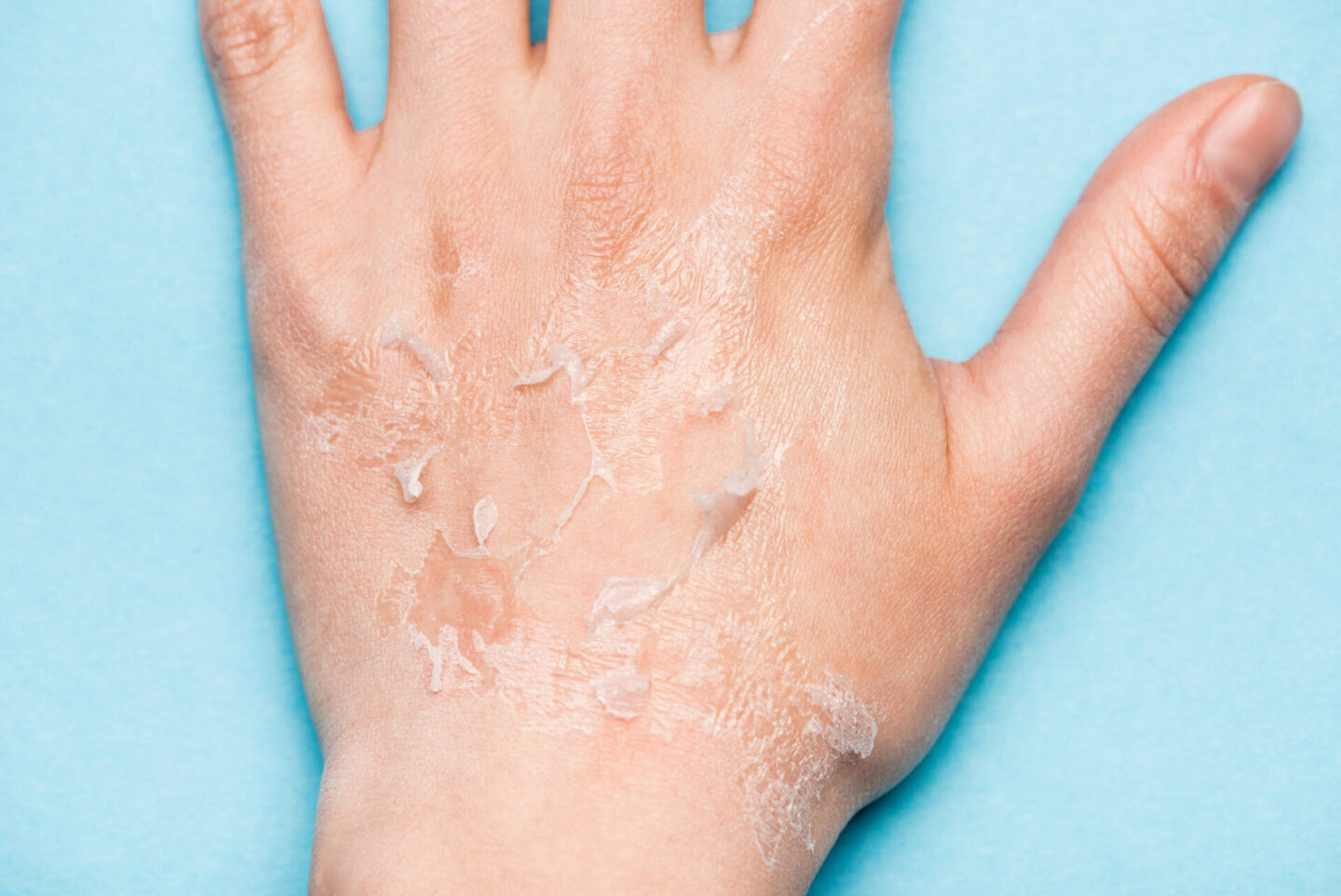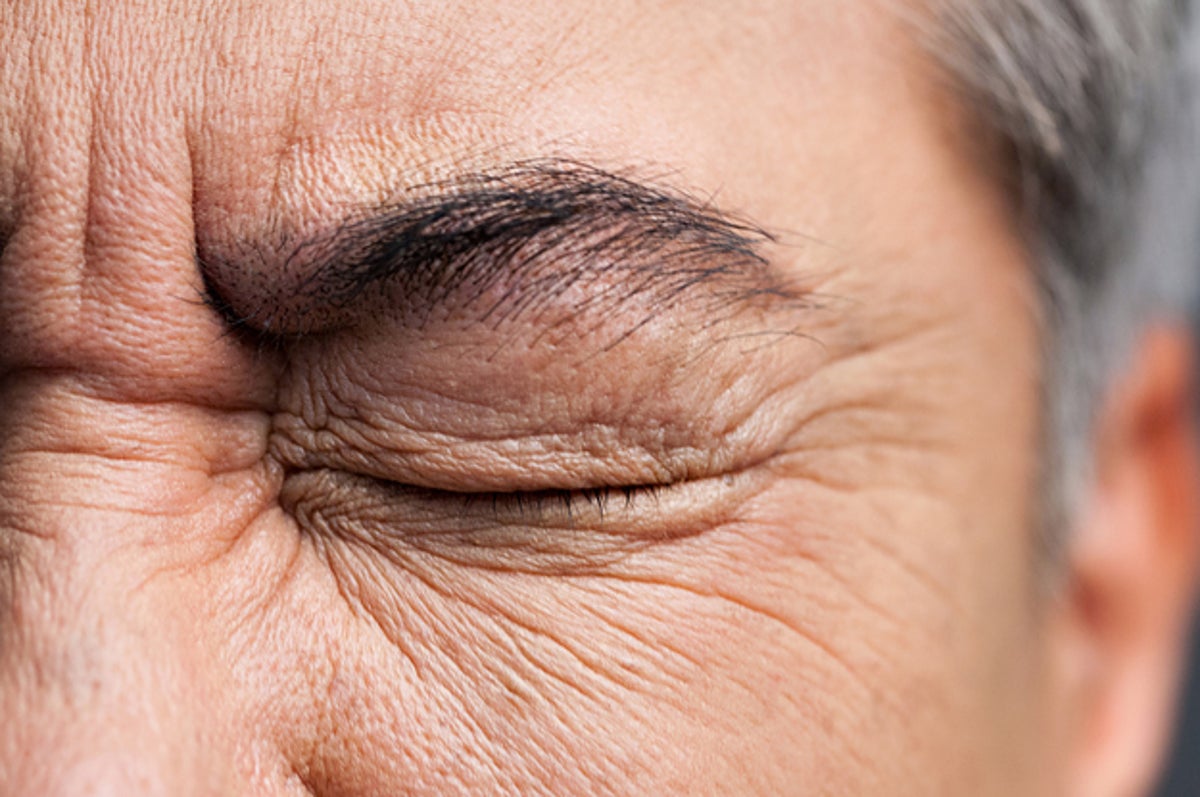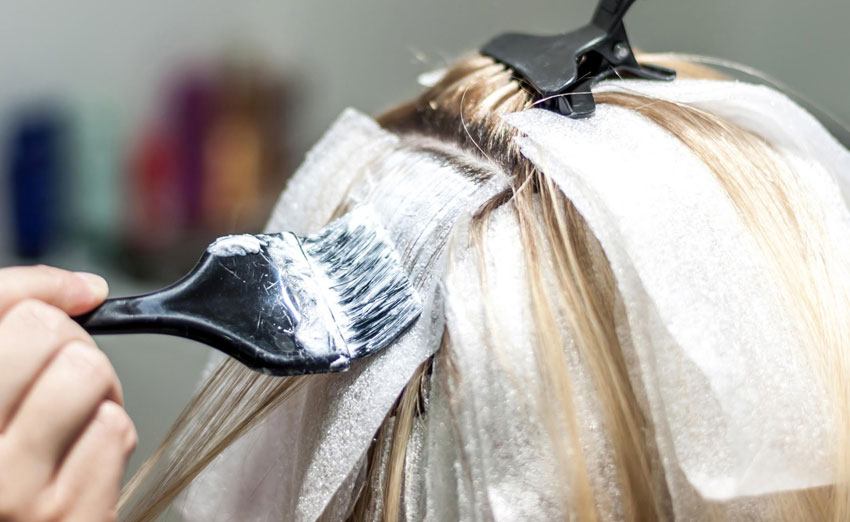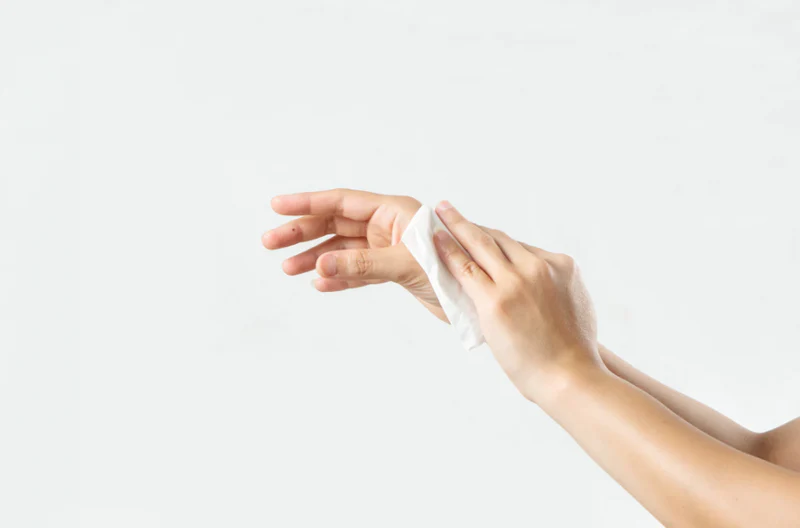“Skin rolling off” when rubbed is likely due to the natural process of desquamation, where dead skin cells shed from the surface layer.
In addition, factors like cell turnover rate, exfoliation, dry skin, skin conditions, and sunburn can influence this process. While some peeling is normal, excessive or concerning peeling should be evaluated by a dermatologist.”
Desquamation: What is the Natural Skin Shedding Process?
Like a delicate dance of renewal, the process of desquamation reveals the remarkable journey our skin takes in its natural shedding.
Definition of Desquamation
Desquamation refers to the continuous, natural process by which the outermost layer of your skin, known as the epidermis, sheds dead skin cells.
Moreover, these dead cells, also called keratinocytes, are constantly being replaced by new ones that are produced in the lower layers of the epidermis. As new cells are generated, older cells are pushed towards the skin’s surface.
Over time, these older cells lose their moisture, flatten, and become less adhesive, causing them to detach and flake off.
Role of the Epidermis and Cell Turnover
The epidermis is the outermost layer of your skin and serves as a protective barrier against the environment.
Additionally, it consists of multiple layers, with the deepest layer, the stratum basale, being responsible for producing new skin cells. As these new cells are produced, they move upwards through the various layers of the epidermis.
During this journey, they undergo changes in structure and composition, ultimately forming the outermost layer, the stratum corneum.
Moreover, the process of shedding dead skin cells is closely tied to the concept of cell turnover. Cell turnover refers to the rate at which old, dead skin cells are replaced by new ones. In youth, this turnover process occurs relatively quickly, with new cells making their way to the surface every 28 to 40 days.
However, as we age, this process tends to slow down, leading to a buildup of dull, dry, or flaky skin. This is one reason why exfoliation, whether through natural desquamation or intentional methods, is important for maintaining healthy and vibrant skin.
Purpose of Shedding Dead Skin Cells
The shedding of dead skin cells serves several crucial purposes for the health of your skin:
Renewal: Desquamation promotes the continuous renewal of your skin’s surface. By shedding dead cells, new and healthier cells are revealed, contributing to a fresher and brighter appearance.
Barrier Function: The skin’s outer layer, the stratum corneum, acts as a barrier that prevents water loss and protects against harmful microorganisms and environmental factors. Regular shedding helps maintain the integrity of this protective barrier.
Preventing Clogging: Shedding dead cells helps prevent the clogging of pores, which can lead to acne and other skin issues. When dead skin cells accumulate on the surface, they can mix with oils and dirt, leading to blockages.
Enhancing Absorption: Removing the top layer of dead skin cells can enhance the absorption of skincare products, allowing them to penetrate more effectively and deliver their intended benefits.
What Are the Key Factors Behind Skin Peeling?
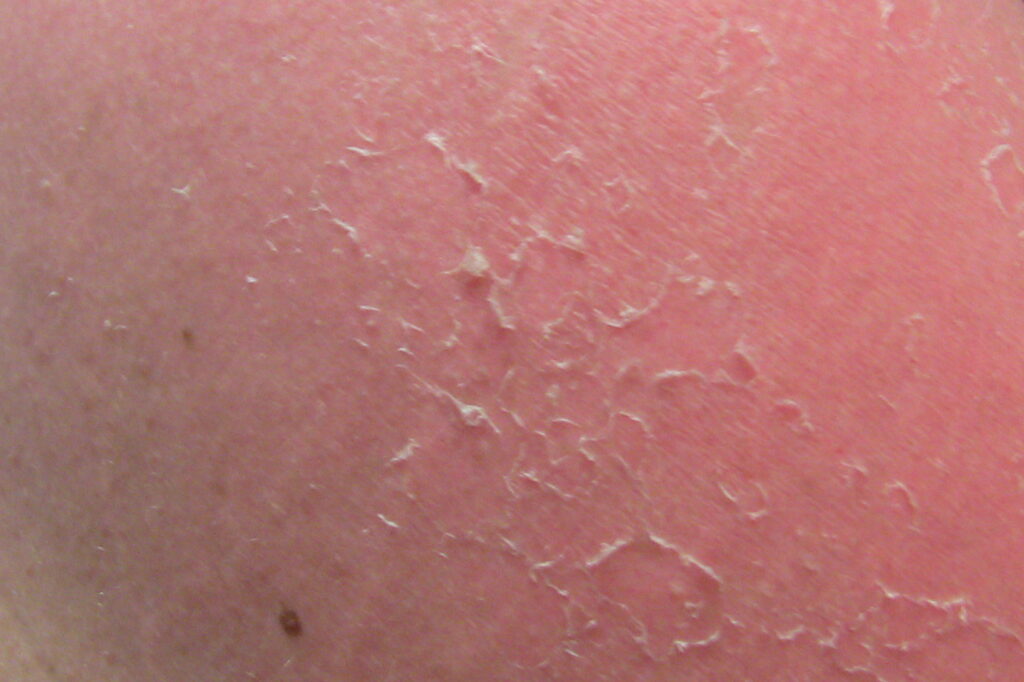
Delving beneath the surface and understanding the pivotal factors driving skin peeling unveils the intricate balance between cellular rejuvenation, environmental influences, and skincare routines.
Exfoliation
Effect of Physical Rubbing: Physical rubbing or exfoliation involves the application of gentle friction to the skin’s surface.
In addition, this friction helps to dislodge and loosen dead skin cells that are ready to shed. Exfoliation can be achieved through methods such as using exfoliating scrubs, brushes, or even soft cloths.
Moreover, it’s important to be cautious, as excessive or aggressive exfoliation can damage the skin’s protective barrier and lead to irritation.
Accelerated Shedding of Dead Skin Cells: Exfoliation accelerates the natural shedding process by manually removing dead skin cells from the surface.
By doing so, you encourage the body to produce new cells to replace those that have been removed.
In addition, this can lead to a smoother texture, improved skin tone, and a reduction in the appearance of dullness.
Dry Skin
Impact of Inadequate Skin Hydration: When the skin lacks proper hydration, it can become dry and dehydrated.
Moreover, dry skin is more prone to flaking and peeling because the natural desquamation process can be compromised.
Proper hydration helps maintain the integrity of the skin’s barrier and supports the shedding of dead skin cells in a healthy manner.
Accumulation of Dry, Flaky Skin Cells: In cases of dry skin, the accumulation of dead skin cells on the surface can become more pronounced.
Additionally, these dry, flaky cells may cling together and become more noticeable during activities like rubbing or exfoliation. Adequate moisturization can help prevent this buildup and promote a smoother skin texture.
Skin Conditions
Increased Shedding Due to Skin Conditions: Certain skin conditions can disrupt the normal desquamation process, leading to increased shedding.
For example, psoriasis is characterized by rapid cell turnover, causing a buildup of skin cells and visible plaques.
On the other hand, eczema can cause the skin to become inflamed, itchy, and prone to peeling due to disruptions in the skin barrier.(e.g., Psoriasis, Eczema)
Sunburn
Peeling as a Response to Sun-Damaged Skin: Sunburn occurs when the skin is overexposed to ultraviolet (UV) radiation from the sun.
Moreover, the body’s response to this damage includes inflammation and increased blood flow to the affected area. As the skin heals, it may begin to peel. This peeling is a natural part of the body’s attempt to remove damaged skin cells and replace them with new ones.
Removal of Damaged Skin Cells: Peeling after sunburn serves a dual purpose: it helps remove skin cells that have been damaged by UV radiation and encourages the regeneration of healthier skin cells.
In addition, this process aids in reducing the risk of long-term sun damage and may alleviate discomfort associated with sunburn.
What Are The Differences Between Normal and Abnormal Peeling?
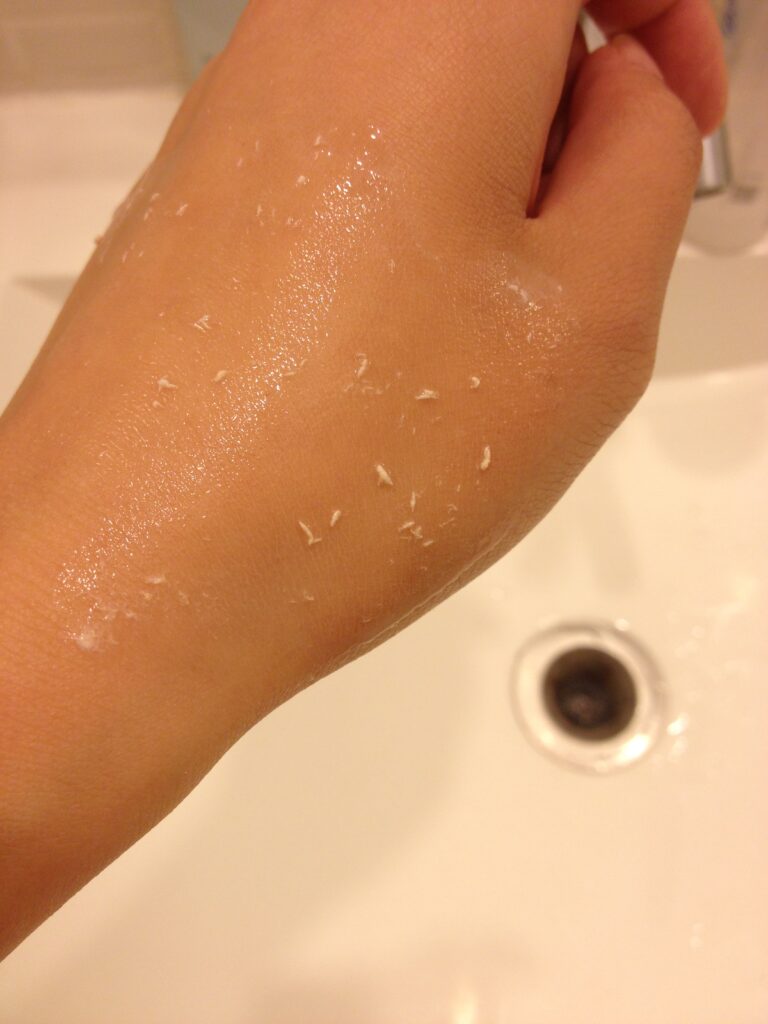
Drawing a fine line between ordinary and concerning, recognizing the distinctions between normal and abnormal skin peeling.
Normal Desquamation as a Part of Skin Health
Normal skin peeling is a natural process and an essential part of maintaining healthy skin. As mentioned earlier, it involves the shedding of dead skin cells from the surface to make way for newer, healthier cells. This process contributes to skin renewal, maintains the skin’s barrier function, and helps prevent clogged pores.
Normal peeling is typically gradual and may not be very noticeable under normal circumstances. You might observe small, fine flakes of skin, especially after cleansing or exfoliating. This kind of shedding is usually not accompanied by discomfort, redness, or inflammation.
When to Be Concerned: Excessive Peeling and Accompanying Symptoms
Pain, Itching, Redness: If you experience excessive peeling accompanied by pain, itching, redness, or irritation, it could indicate an underlying issue.
Moreover, these symptoms might be indicative of conditions like dermatitis, eczema, or allergic reactions to skincare products.
Intense itching and discomfort could also point to an inflammatory response that requires attention.
Seeking Professional Dermatological Advice: When you notice persistent, excessive, or unusual peeling that goes beyond the normal shedding process, it’s advisable to seek professional guidance.
A dermatologist, who is a medical expert specializing in skin health, can help diagnose the underlying cause of the peeling and recommend appropriate treatment.
However, if you notice any of the following signs, it’s a good idea to consult a dermatologist:
Severe and Rapid Peeling: Firstly, your skin is rapidly shedding in large, painful pieces, it could be a sign of a more serious skin condition that requires medical attention.
Unexplained Changes: Then, if your skin’s texture, color, or appearance changes suddenly and is accompanied by peeling, a dermatologist can help determine the cause.
Persistent Symptoms: Next, if peeling, along with pain, itching, or redness, persists for an extended period despite home remedies, it’s best to consult a professional.
Skin Conditions: Finally, If you have a known skin condition like psoriasis, eczema, or any chronic skin issue, regular dermatologist visits are important to manage and monitor your condition.
FAQ’s
Is it normal to rub off dead skin?
Yes, it’s normal to rub off dead skin as a part of the natural desquamation process. This helps reveal healthier skin underneath.
What is it called when skin rubs off?
The process of skin rubbing off is called desquamation. It’s the shedding of dead skin cells from the outer layer of the skin.
How do I stop my skin from peeling?
To prevent excessive peeling, maintain good hydration, use gentle cleansers, moisturize regularly, and avoid harsh exfoliation.
Why does dirt come off my skin when I scratch it?
Scratching can dislodge dirt particles trapped in the oils on your skin’s surface, causing them to come off.
What are signs of dead skin?
Signs of dead skin include dryness, flakiness, rough texture, and a lack of vibrancy in skin tone.
Why does skin come off when I rub my hands together?
Rubbing hands together can cause friction that dislodges loose, dead skin cells, making them come off.
Why does so much dead skin come off after I shower?
Showering can soften and loosen dead skin cells, making them more noticeable when they’re rubbed or washed away.
What happens when two thighs rub together?
Thighs rubbing together, often called chafing, can cause irritation due to friction, leading to redness or discomfort. Proper clothing and moisturizing can help prevent this.
Final Thought
In conclusion, understanding why skin peeling occurs is vital for maintaining optimal skin health and addressing any potential issues.
In addition, the natural process of desquamation, where dead skin cells are shed from the surface, plays a crucial role in skin renewal, barrier maintenance, and overall appearance.
Moreover, factors like exfoliation, skin hydration, skin conditions, and sunburn can influence the extent and pattern of skin peeling.
A dermatologist can diagnose any underlying skin conditions and provide appropriate guidance to ensure the well-being of your skin.
By recognizing the balance between normal shedding and potential concerns, you can establish effective skincare routines and take proactive measures to maintain vibrant and healthy skin.







